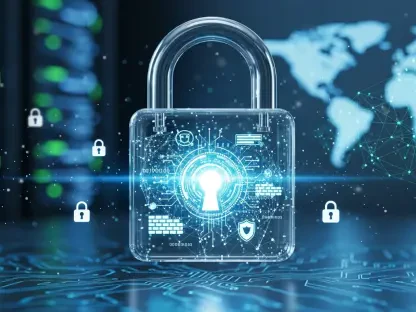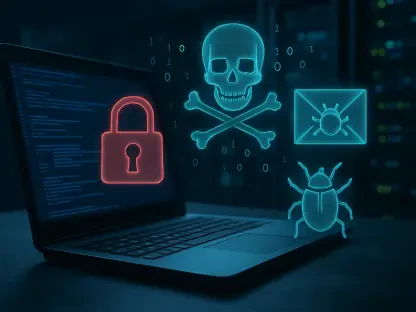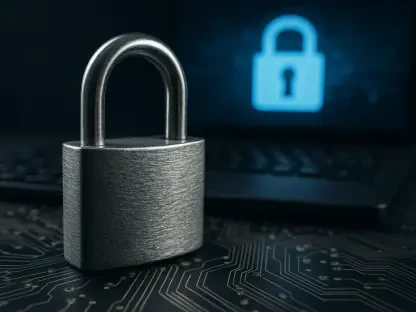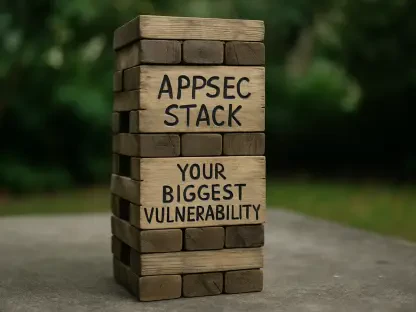Imagine a world where a simple smart speaker in your living room could become a gateway for a cyberattack on a national scale, or where a connected thermostat might inadvertently aid in disrupting an energy grid. This scenario is no longer the stuff of science fiction but a pressing reality as the Internet of Things (IoT) continues to weave itself into the fabric of daily life. Once celebrated for bringing convenience and connectivity through gadgets like smart home devices, IoT has evolved far beyond its consumer roots. Today, it spans industrial systems, critical infrastructure, and even defense mechanisms, presenting risks that extend to geopolitical stability. The sheer scale of connected devices, now numbering in the billions globally, amplifies the potential for exploitation. As vulnerabilities in these systems come to light, the conversation has shifted from mere personal privacy concerns to urgent national security threats, demanding immediate attention and action from all stakeholders involved.
The Shift from Convenience to Critical Risk
The journey of IoT began with a focus on enhancing everyday experiences, connecting devices like baby monitors and fitness trackers to make life more seamless. However, this rapid proliferation has turned what were once minor annoyances—such as a hacked smart camera invading personal privacy—into substantial dangers. Attackers now repurpose these gadgets into tools for broader malice, forming botnets or using them as surveillance points to infiltrate larger networks. The implications are staggering when considering that a single compromised device can serve as an entry point to critical systems. Beyond the home, IoT’s integration into industrial sectors has heightened the stakes, where a breach in a connected warehouse system could disrupt supply chains on a massive scale. This transformation underscores a stark reality: the same technology that simplifies tasks can also be weaponized, turning consumer conveniences into vectors for widespread disruption if security is not prioritized.
Moreover, the convergence of consumer IoT with operational technology in vital sectors like energy and transportation reveals an even graver landscape of risk. Take, for instance, industrial IoT platforms that manage a significant portion of global solar energy output—over 20% in some estimates. These interconnected systems, while efficient, create an expansive attack surface for malicious actors seeking to exploit vulnerabilities. A successful attack on such infrastructure could lead to power outages or economic turmoil, affecting millions. Unlike isolated consumer breaches, these incidents carry the potential for real-world consequences that ripple across borders. The growing overlap between personal devices and critical systems means that a flaw in a seemingly innocuous gadget could cascade into a national crisis, highlighting the urgent need to rethink how these technologies are secured against increasingly sophisticated cyber threats.
Geopolitical Dimensions and Real-World Impacts
As IoT permeates defense and governmental systems, its role in geopolitical conflicts has become alarmingly evident. Connected devices have already been exploited in active disputes, serving as tools for espionage or disruption on a global stage. These incidents demonstrate that cyber risks are not confined by national boundaries, with attackers leveraging IoT vulnerabilities to undermine stability in regions far beyond their origin. The potential for state-sponsored actors to target critical infrastructure through seemingly benign devices adds a layer of complexity to international relations. Such exploitation can destabilize economies or compromise military operations, turning IoT into a silent battlefield where traditional warfare meets digital subterfuge. This evolving threat landscape necessitates a deeper understanding of how interconnected technologies can be manipulated to influence geopolitical outcomes on a profound level.
Furthermore, the real-world implications of IoT vulnerabilities extend to tangible disruptions that affect public safety and trust. Consider the scenario of a hacked traffic management system, where manipulated IoT devices could cause chaos on city streets, endangering lives and eroding confidence in technological advancements. Reports of such risks are no longer hypothetical, as instances of compromised systems have led to measurable harm in various sectors. The energy grid, a lifeline for modern society, remains particularly vulnerable, with interconnected devices offering multiple points of failure for attackers to exploit. These examples illustrate that the consequences of IoT breaches are not abstract but directly impact daily life, from access to essential services to the integrity of public infrastructure. Addressing these challenges requires a concerted effort to anticipate and mitigate risks before they manifest into crises of catastrophic proportions.
Regulatory Gaps and the Call for Accountability
Despite the escalating threats, the current state of IoT security regulation remains woefully inadequate to address the scale of the challenge. Initiatives like the U.S. Cyber Trust Mark and Europe’s ETSI standards aim to establish benchmarks for device safety, but their voluntary nature often results in limited compliance among manufacturers. With the average number of connected devices per household skyrocketing in recent years, each unit represents a potential weak link in the broader security chain. The absence of enforceable global standards exacerbates this issue, leaving vast gaps that cybercriminals are quick to exploit. Without mandatory frameworks and strict oversight, vendors may prioritize cost and speed to market over robust security measures, perpetuating a cycle of vulnerability. This regulatory shortfall demands urgent attention to ensure that the rapid expansion of IoT does not outpace the ability to protect against its inherent risks.
Additionally, the responsibility to secure IoT ecosystems cannot rest solely on regulators; vendors and users must also play pivotal roles. Manufacturers need to be held accountable for delivering regular updates and patches to address emerging threats, while transparency in their security practices should be a non-negotiable standard. At the same time, consumers must be empowered to demand safer products, pushing brands to prioritize protection over mere functionality. The blending of consumer IoT with critical operational technology in sectors like manufacturing and power distribution further complicates the issue, as flaws in one area can cascade into others with devastating effects. Bridging these regulatory and accountability gaps requires a collaborative approach, where governments accelerate the development of binding certification processes, and all stakeholders commit to a shared goal of safeguarding an increasingly connected world against looming digital dangers.
Forging a Secure Path Forward
Reflecting on the trajectory of IoT, it has become evident over time that what started as a wave of consumer innovation has morphed into a complex web of security challenges. The vulnerabilities unearthed in devices and systems over the years paint a sobering picture of risk, from personal privacy breaches to national security threats. Past efforts to address these issues often fell short, as voluntary guidelines and fragmented regulations struggled to keep pace with the rapid proliferation of connected technologies. The exploitation of IoT in geopolitical conflicts and critical infrastructure attacks serves as a stark reminder of the stakes involved, urging a reevaluation of how society approaches this double-edged sword of connectivity and danger.
Looking ahead, the path to securing IoT demands actionable steps and collective resolve. Governments must prioritize the creation and enforcement of comprehensive standards, ensuring that security is embedded into the design of every device. Vendors should commit to ongoing support and transparency, while users are encouraged to advocate for safer technologies by making informed choices. International cooperation will be crucial to tackle cross-border cyber threats, fostering a unified front against exploitation. By embracing these strategies, the potential of IoT to transform lives can be preserved, turning past lessons into a foundation for a more secure and resilient digital future.









